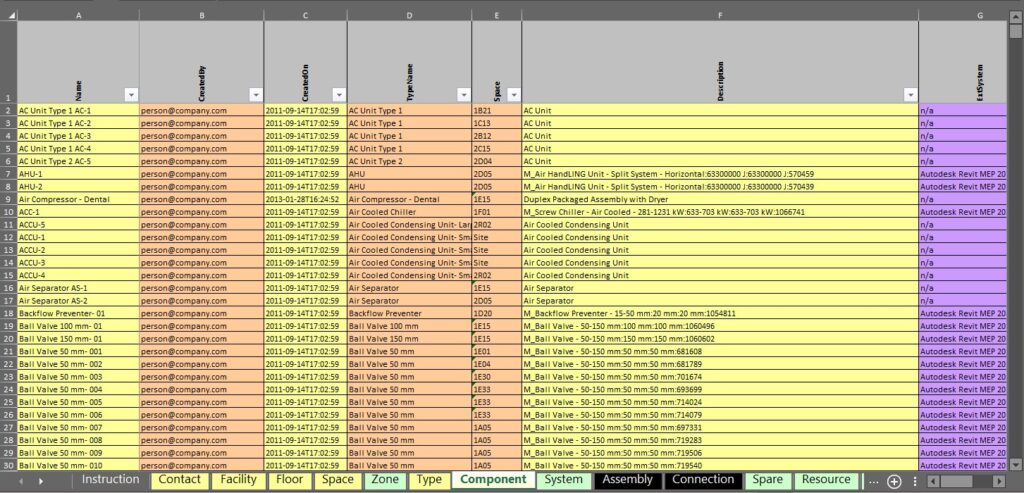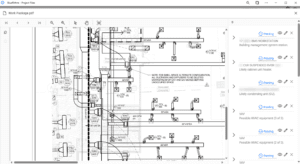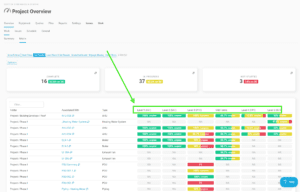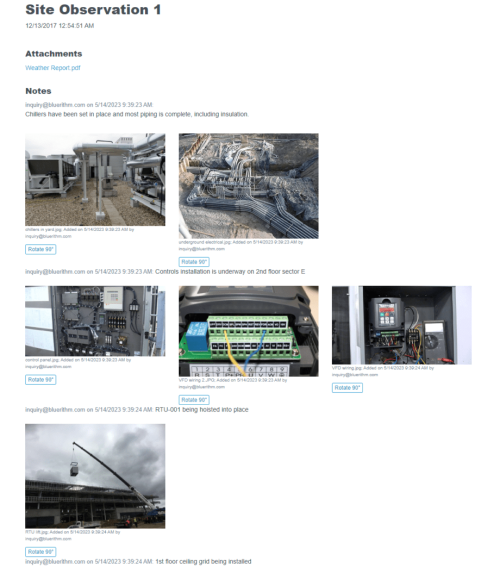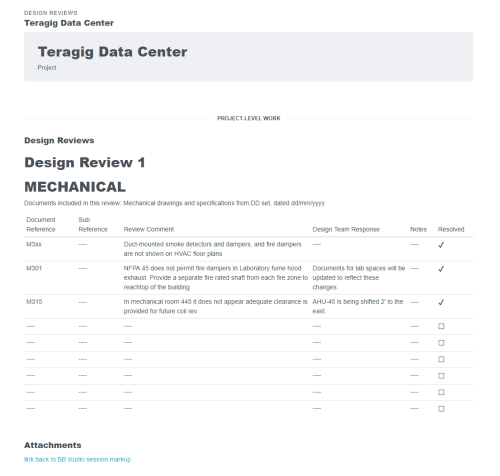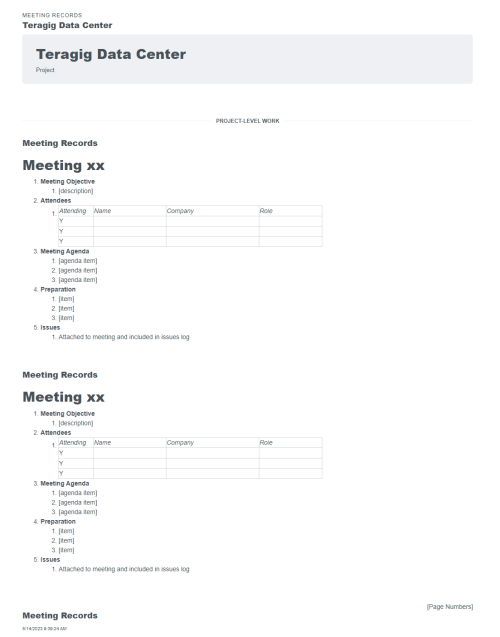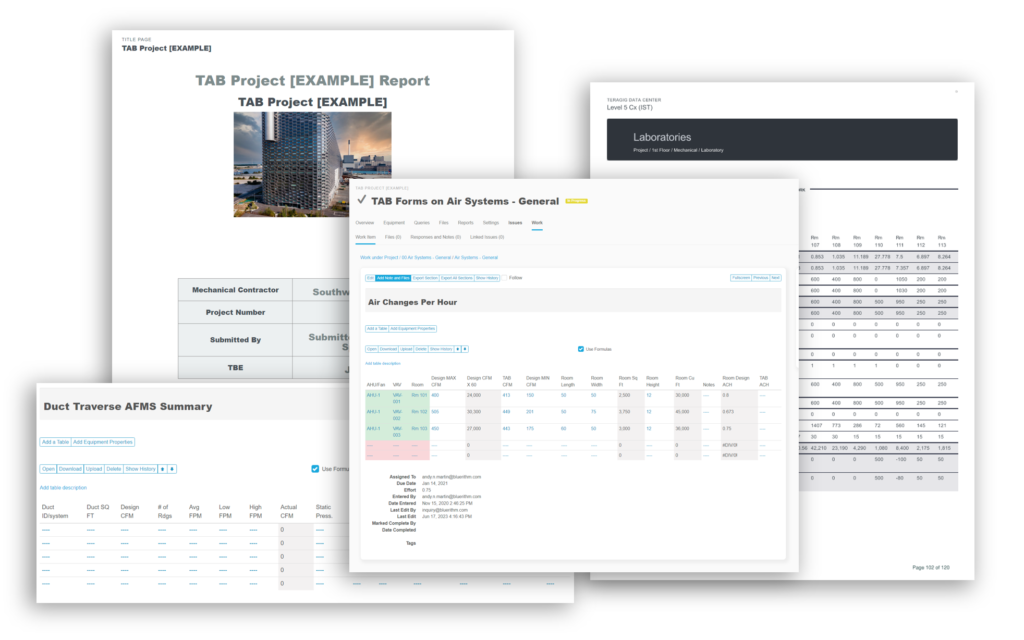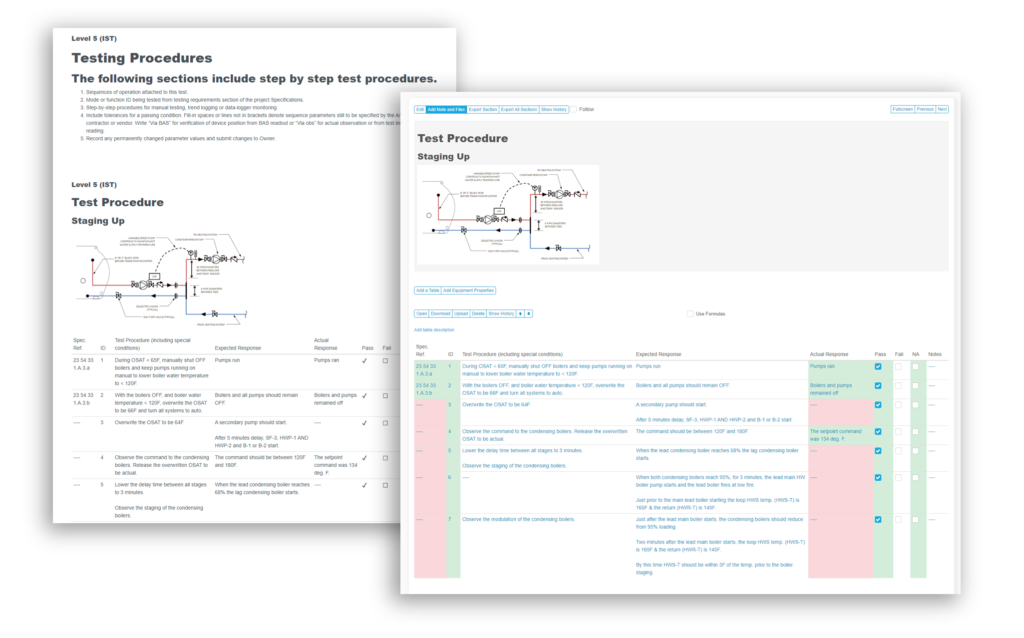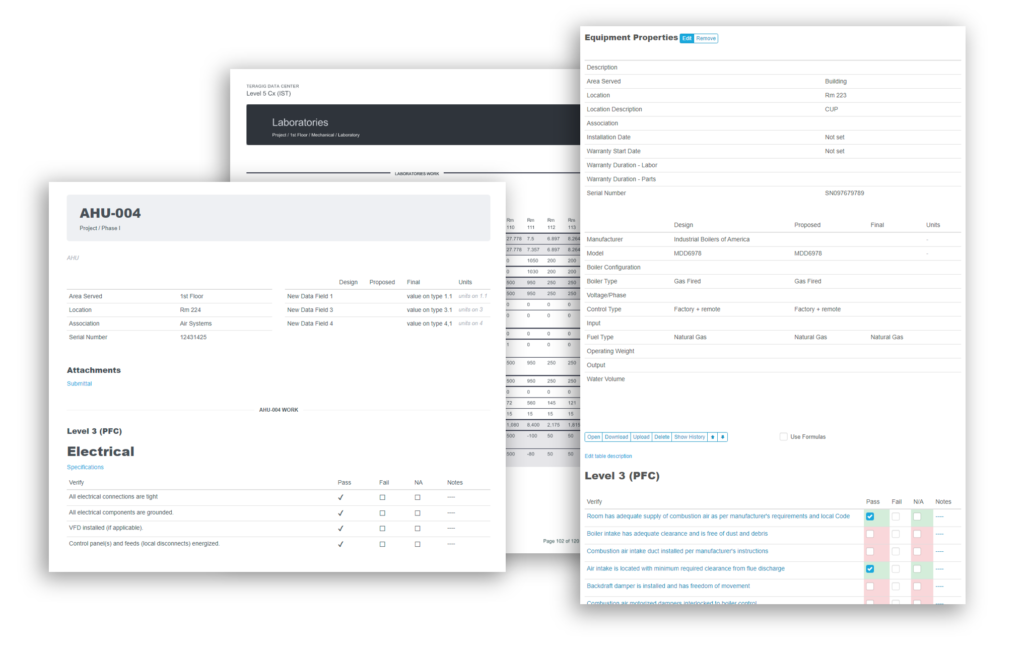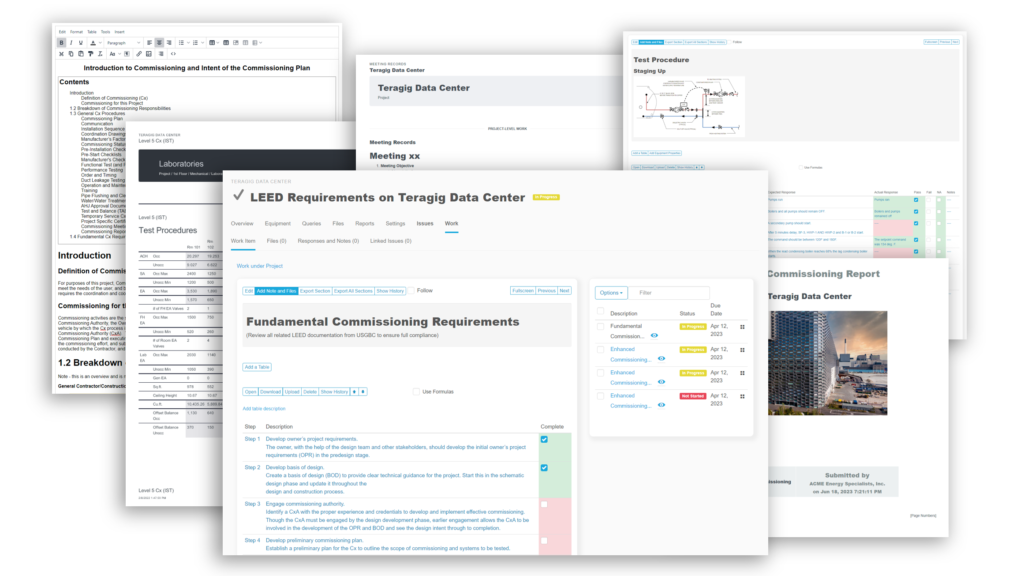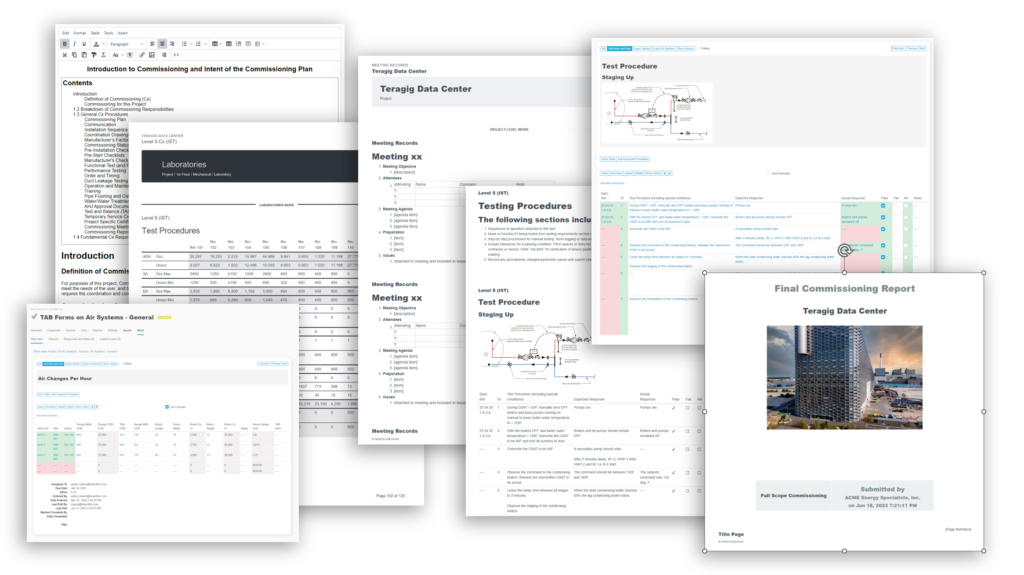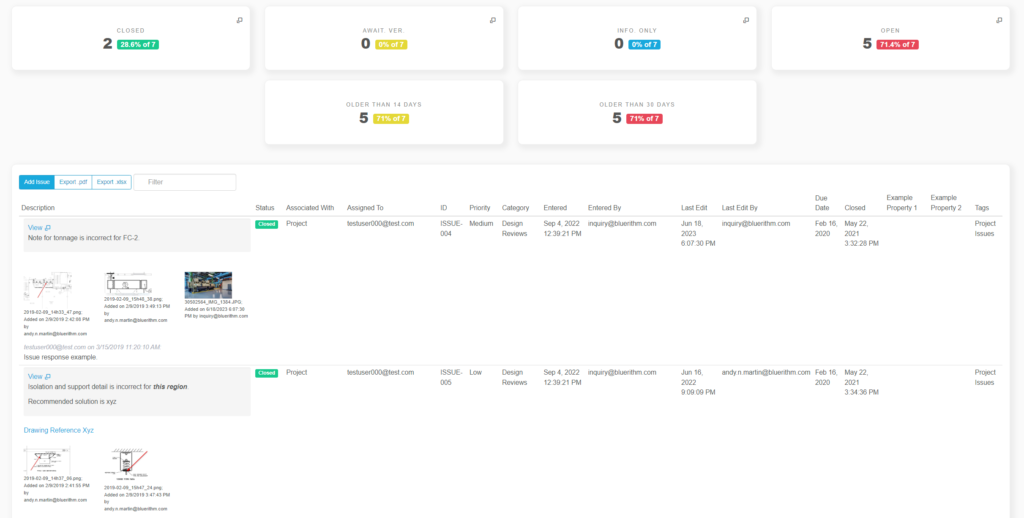There are many challenges that companies face when working with data and information. Getting data in a standardized format is a struggle many industries deal with. Companies spend countless hours cleaning data so that it can be used. There is no exception in the construction industry. COBie has emerged as an agnostic and industry standard solution to address these challenges.
Managing information in a construction setting is difficult. There are countless parties involved that submit information during building construction. Much of the data that’s developed throughout the construction process is not put in a format that is useful for building owners. However, that has begun to change recently as more building owners require firms involved in the construction process to put their data in a more usable format. By far, the most common standardized format is known as COBie.
The Data Handoff
During a construction project a lot of data is generated. This data is not always recorded and kept track of in the best possible way. This leads to issues for construction companies and building operators.
When a building is handed off to the eventual operator, the information and data is not always consistent. One construction firm may have all of their files on a flash drive, while another firm may hand the building operators several large folders filled with building information. This is only one issue the construction industry faces during the handoff process.
Additionally, the transfer of documents and information to building owners may happen months after the client has already taken occupancy of the building. Building owners can spend countless hours and small fortune cleaning this data so they can use it for their own purposes. Many building owners do not spend the time or resources to properly clean their data.
This lack of data consistency can cause headaches down the road for building operators. Interested stakeholders may not know where to find important information, or worse, it could be missing, incomplete, or damaged. This can result in issues for building owners. For example, building operators may not have the right data around HVAC equipment tests if an issue arises in the future.
For decades, the construction industry relied on this inefficient process. There was a huge opportunity for innovation in this area. That is why the US Army Corps of Engineers, and more specifically the Construction Engineering Research Laboratory, decided to do something about it. Funded by a grant from NASA and the White House Office of Science and Technology policy, the team developed a standard for managed asset information.
The result of this process was the Construction-Operations Building information exchange, or better known as COBie. The standard has even spread across the Atlantic. In the United Kingdom, COBie has become part of the data requirements for the BIM Working Party Strategy.
What is COBie?
COBie is a specification that regulates how information is formatted in the construction industry. COBie ensures that anyone involved in the construction process has access to consistent and structured information about a building. This information is vital for post-occupancy facility management and decision making about the building. This allows building operators to view information and data in a way that they see fit. Whether that is simple spreadsheets or within visualization software.
COBie enables data transfer between technology platforms in the construction industry. More building owners are adopting COBie and require their construction and design firms to manage data deliverables in a COBie format. Firms that choose not to do so may be losing out on business.
What Data is Contained in COBie?
Construction project data is often scattered across different documents. Relevant project information can be contained in engineering drawings, specifications, bills of quantities, and more. Using traditional methods, architecture, engineering, and construction (AEC) professionals would meet and collaborate with each other to document everything manually at various points during construction.
Using COBie, AEC professionals involved in the construction project are able to easily update the documentation throughout the construction process. COBie ensures that all construction project information is put into one format and shared with all relevant parties. All of the data can be connected in a COBie spreadsheet or other platform.
Why Care About COBie?
COBie saves construction firms time and money. The US Army Corps of Engineers set out to understand how much value COBie would be for building owners. The Assessment of Life Cycle Information Exchanges dug into how much COBie can save construction firms and building owners. The study found that COBie offered a savings of 96% or more than $500,000. These savings highlights the importance of improved data quality during a data handover
COBie improves data quality during the handover process. Various stakeholders throughout the process, such as facility managers, are able to easily review the construction handover documents. COBie can benefit every party involved in the construction process.
The Design Team
Building designers have to deal with a lot of building drawings. COBie contains compiled data of all of the building design drawings. Designers are able to export all COBie data related to their building drawings. Any design work that needs to be completed after the building is handed off can be a headache for design firms. COBie can help designers facilitate any work that happens once building construction is finished.
Contractors
CObie helps ensure that contractors submit their data related to building construction. Construction firms are able to easily gather and organize information that any contractor may submit. Less time and effort will be spent on equipment surveys. Building owners may bring contractors in after construction is complete. Contractors often need building information in order to complete their jobs. COBie can help contractors get the information they need to finish whatever job they are working on for the building operator.
Facility Managers
COBie makes it easy for anyone to access equipment documentation. Facility managers can better understand their building’s spaces. Building owners and managers are able to improve building operations, maintenance, and management with COBie. Stakeholders are able to easily refer to any documentation as needed while managing the building’s facilities.
COBie ensures that parties involved throughout the construction process adhere to a standard for the data they submit. More and more construction firms and building owners are moving to the COBie standards. Organizations need to embrace the COBie standard or risk being left behind. Commissioning and test and balance firms may struggle to properly implement COBie standards throughout their processes. Thankfully, Bluerithm has a solution to ensure that the data handoff process goes smoothly.
Bluerithm COBie Technology
Bluerithm has multiple built-in tools that allow users to support COBie files (coming March 2022):
- A validator tool that checks an uploaded COBie file to confirm it’s valid according to COBie standards. Users can be assured the COBie files they have are compliant with the standard.
- An import tool that will build out an equipment list in a Bluerithm project from a COBie export from a different industry software platform. Users do not have to worry about cleaning or consolidating data when received from another party.
- An export tool that will produce a valid COBie file based on equipment / assets in a Bluerithm project. Once equipment data is uploaded to Bluerithm, users can create and export a COBie file with a few clicks.
These features allow users to fully leverage the COBie standard. Construction firms can ensure that they will have proper final reports detailing all building information. Commissioning companies can utilize Bluerithm to ensure that all documentation is ready for handoff to the building owners.
COBie is an effective standard that the entire construction industry is turning to. Companies need to embrace this and similar standards to continue productivity improvements in the industry. Bluerithm ensures that commissioning companies and test and balance firms have the tools needed to maintain the COBie standard.

